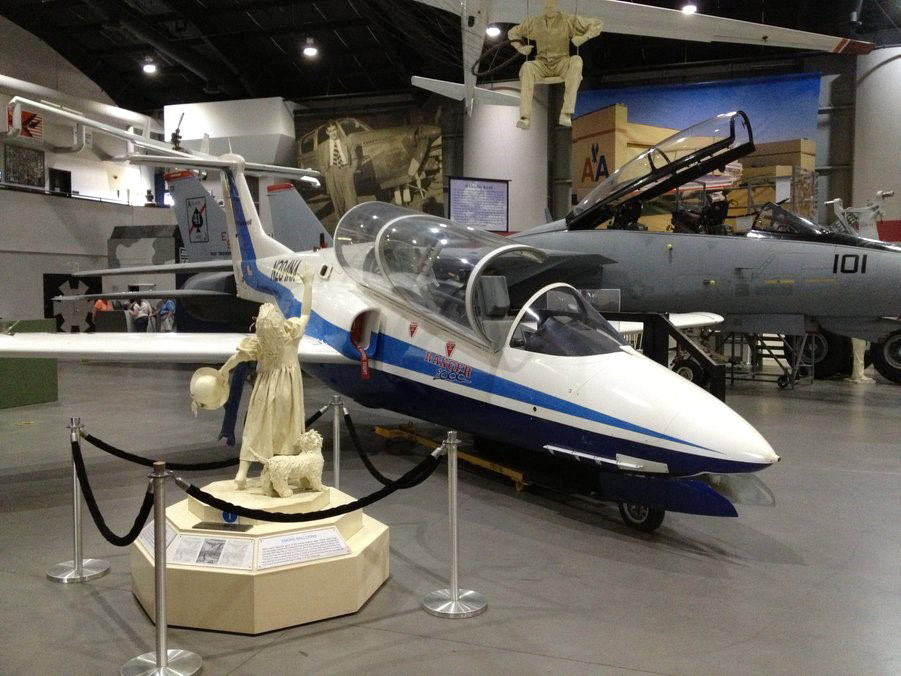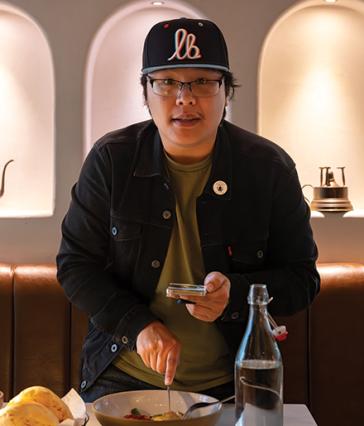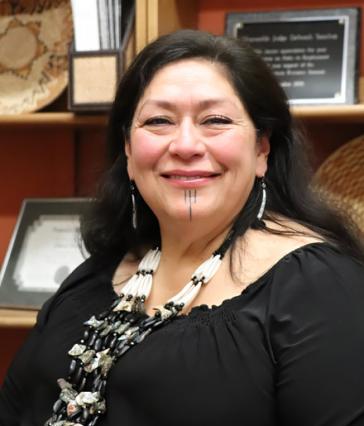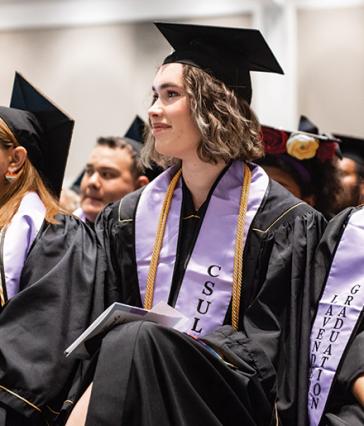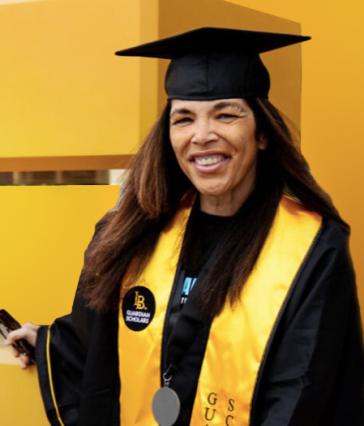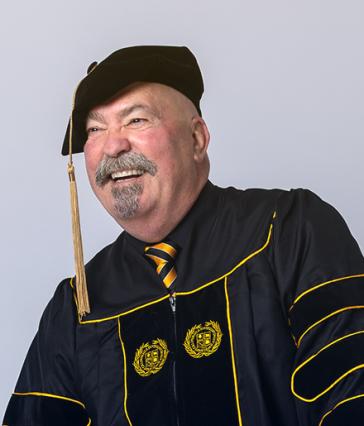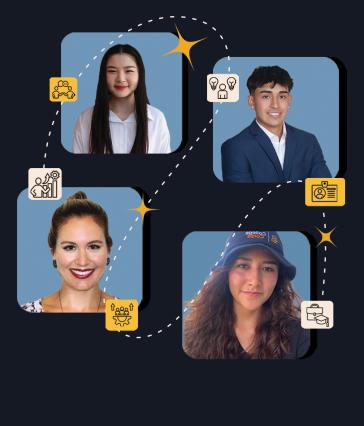Through his support, CSULB alumnus gives flight to students' goals
Darold B. Cummings ’67 admits his paper airplane skills are lacking. He called his flimsy folded gliders “adequate” - they fly, but don’t travel far. It’s a surprising confession from someone who has designed some of the world’s top military aircraft.
For more than 50 years, Cummings has sketched aircraft designs for the U.S. military, from the landing gear to the pilot’s seat and every seat belt in between, a career he started after graduating from Cal State Long Beach with a B.A. in industrial design.
Today, Cummings is recognized as one of the aeronautics field’s most innovative designers, having designed bombers, fighters, trainers and commercial aircraft. A distinction that continues today at 78 years old.
“I retired once. It lasted two weeks,” said Cummings, who heads his own consulting business and donates to the College of the Arts so that more Beach students can achieve their goal of joining the design workforce. He was recognized as a Distinguished Alumnus in 2016.
Through the No Barriers campaign and the donations of graduates like Cummings, The Beach aims to continue to assure that its students make an indelible impact on the economic, social, educational and scientific evolution of our state.
He credits the support he received from CSULB professors and his dad for his problem-solving skills and the confidence to spread his wings in the workforce. By giving back to his alma mater, he hopes to help young designers reach their goals.
Today, Cummings remains one of the few aircraft designers who still uses pencils to sketch his ideas on paper, leaving others to input the drawings into a computer. It’s a practice that raises eyebrows at the Air Force Academy, where he teaches.
“I tell them that, one, I never learned (how to design on a computer). Secondly, I tell them that when you draw a line on a piece of paper and move that line along, that goes to a different part of your brain than making keystrokes on a computer. It processes it differently.
“So, when I draw that line, I look at how the air is moving over that line in my mind, how it is moving over the wing, how it is moving over the fuselage. You can’t do that pecking on a computer.”
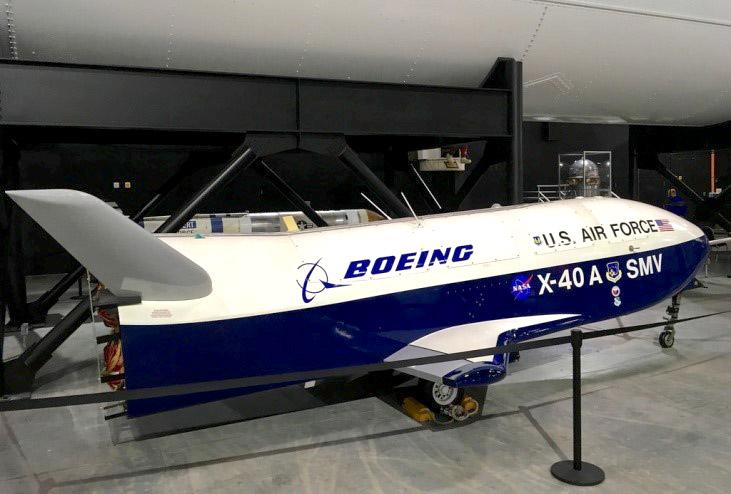
Cummings began his 56-year career shortly after graduation in the drafting department of a local aerospace company. His boss saw him sketching and asked whether he would be interested in entering his airplane designs into a company contest.
“He said ‘You won! You are going over to advance design where they do all the airplanes that are 10 years out in the future,’” Cummings recalled. That began a career that has endured from the Afghanistan war to the Russian-Ukraine war.
Within a year at North American Aviation, Cummings was designing advanced military aircraft. He said he routinely uses the problem-solving skills that he learned at The Beach for his job as a designer.
He remembered working in an on-campus lab when he discovered that there was not a tool to cut wood into a particular shape he wanted. He asked his professor what to do.
“He said, what would you do if you were a real designer?” Cummings said. “So, I sat down, designed the tool. I have thought about that conversation solidly for 56 years.
“It was like a switch went off. I realized I am not always going to have people around to solve my problems.”
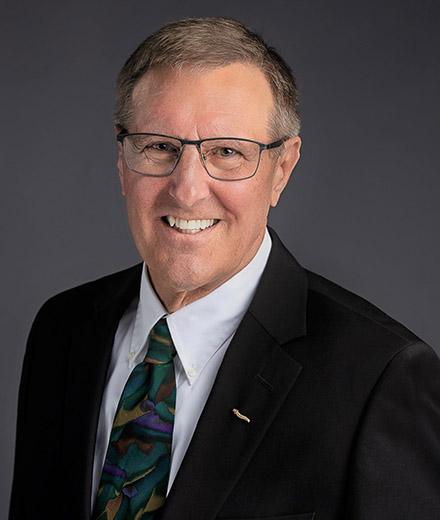
Cummings, who was the chief air vehicle designer of the YF-23 Stealth Fighter, said his biggest problem today is how to juggle five top-secret projects that he cannot discuss. As a consultant at his company ForzAero, his fingerprints continue to be on aircraft designed for NASA, the U.S. Air Force and the U.S Navy. In fact, one plane has his name written on the bulkhead.
His eye for design has earned him numerous awards and achievements, including the prestigious American Institute for Aeronautics and Astronautics Aircraft Design Award, the equivalent of a Nobel prize or Pulitzer.
Throughout his career, Cummings co-designed the first airborne laser, which earned him the first of his 41 patents. At Boeing, he was chief engineer on several projects, including the Ranger 2000 jet trainer that is on display at the Tulsa Air and Space Museum, one of three aircraft currently in museums.
Cummings traces his success to his days at The Beach, a path he hopes others can follow through his support.
“I was the first person in my family to go to college, so I had no reference as to what to expect or how to adjust to such a life-changing event,” he said. “Going to CSULB was an incredible experience that influenced my whole life.
“I addition to the incredible academics, I acquired the ability to view my professional and personal challenges in a broader perspective, which was key to my success in life for the past 55 years.”
